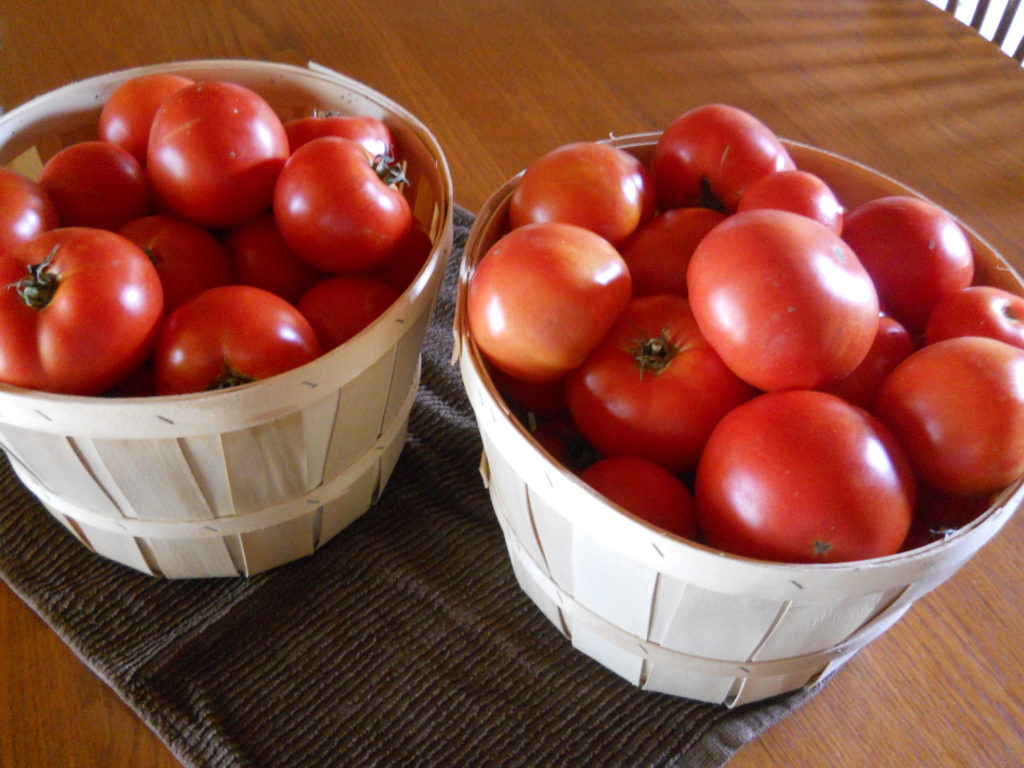
Continuing on with how we plan our gardens and using our simple example from Part 1, we know we will need space in our sample garden to grow 7 tomato plants. Once again, refer to the PDF file attached. Tomato plants are planted at a density of 0.5 per square foot or 1 plant for every 2 square feet. Each of our 7 tomato plants will need 2 square feet to grow, so we need 14 square feet of space.
Let’s say we have 15 square feet of space. We now have the opportunity to add another vegetable to that extra one square foot. Lettuce would go nicely with tomatoes. Looking at the chart, we could add 4 lettuce plants to our garden because lettuce is planted at a 4 plants per square foot density.
Let’s take that one step further and say we grow a 60-day lettuce variety. Maybe we live in an area that has 120 growing days. Our lettuce is finished growing at the half way point of the season. We could then plant a second crop of lettuce in the same space, or we could plant another 60-day vegetable (let’s say beets) after the lettuce is harvested. This is called succession planting. This is one way to make your available space more productive.
But what if we only have 12 square feet of space? Well, then we need to adjust our expectations. We can only grow 6 tomato plants in 12 square feet. Six good tomato plants will yield 24 pounds of tomatoes in a perfect world. Enter “Mother Nature”. Using our previous 70% factor for “Mother Nature”, we should only estimate a yield of 16.8 pounds of tomatoes (24 pounds x 70%).
I know this is a very simplified version of garden planning, but it is the concept used for our broader scale determinations. Some other factors we consider are input costs, expected market purchases, retail pricing, time constraints, and spoilage. It’s not an exact science and sometimes running through the exercise seems pointless. Take for example last year. It rained nearly every day. Tomatoes rotted on the vines before they ripened. Tomatoes typically make a decent profit margin. Last season was pitiful. I guess that’s why farmer’s say, “There’s always next year.”
So why do we do it? There’s something so exceptional to eating a fresh food with the nutritional quality and freshness at its peak. Maybe it’s the excitement of that tiny seed emerging into a plant that fascinates us. Maybe it’s just that some of us still like playing in the dirt like we were a child again. Maybe some of us cannot be contained by walls and prefer the outdoors. I really don’t know the answer. All I do know is I can’t quit. It’s an addiction with a support group that encourages you to continue. I have no intentions of quitting, and hope I can encourage others to become a gardening junkie, too.